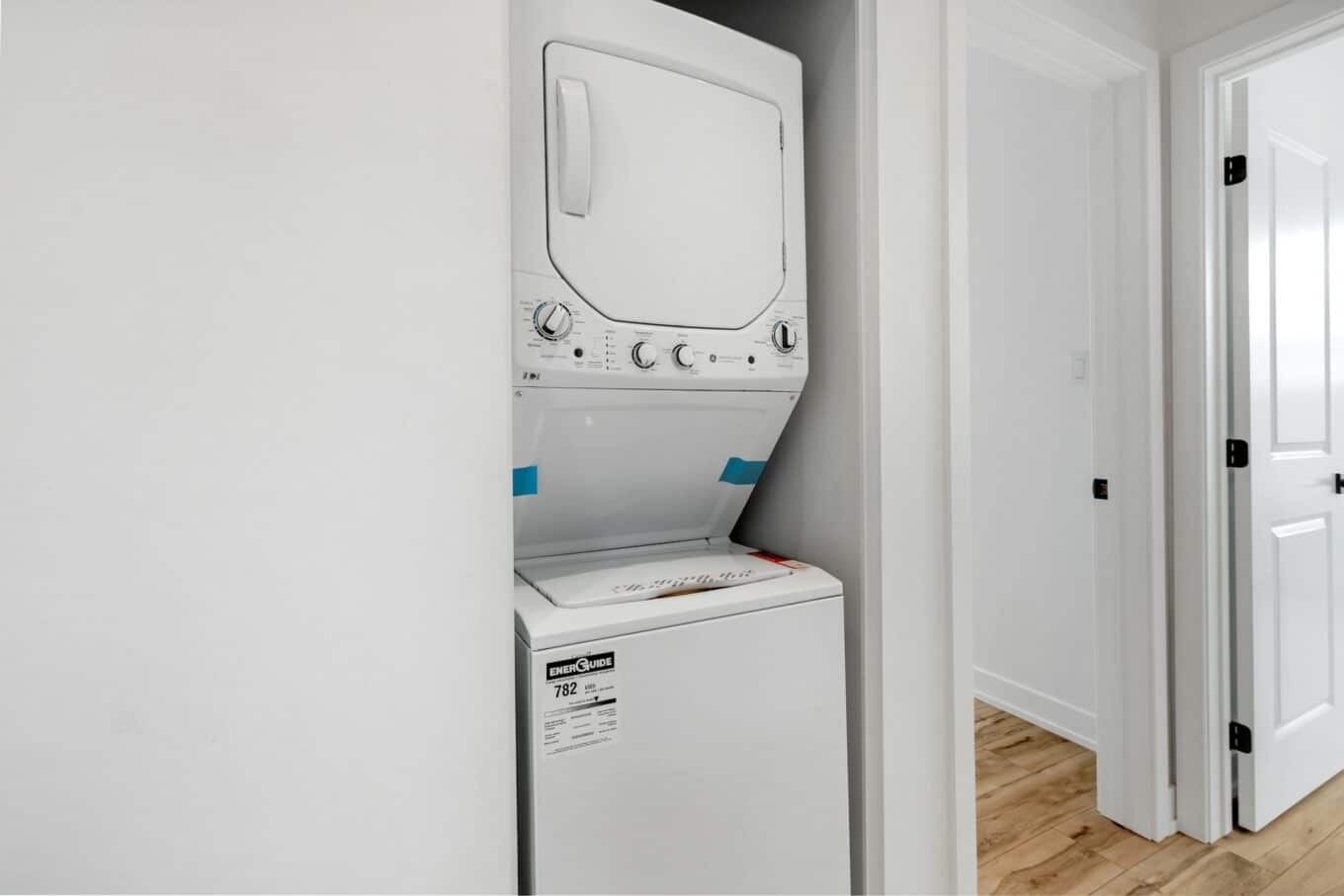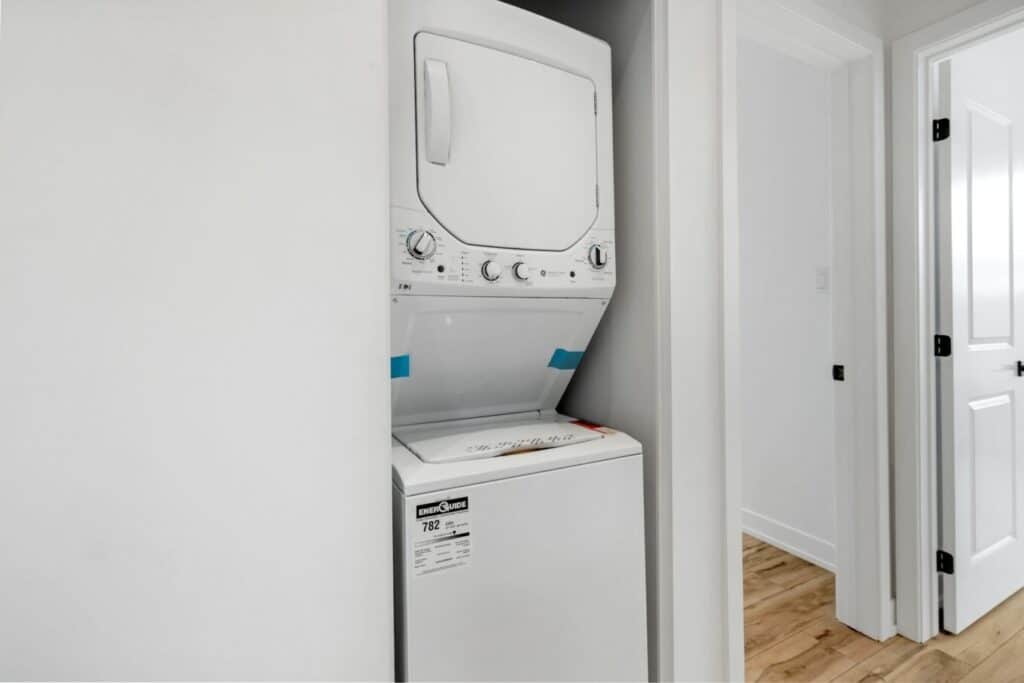Signs of a Clogged Dryer Vent
Keeping your dryer vent clean and clear is not just a matter of efficiency—it’s also about safety. A clogged dryer vent can lead to longer drying times, overheating, and even potential fire hazards. But how do you know if your dryer vent is clogged? And what are the common causes of such clogs? This article will guide you through the signs of a clogged dryer vent and help you understand the culprits behind it. By recognizing these signs and causes, you can take the necessary steps to prevent them, ensuring your dryer operates safely and efficiently. Whether you’re a homeowner or a renter, this information is crucial to maintaining a safe and efficient laundry routine.
Signs Your Dryer Vent May Be Clogged
If you are aware of the signs, it’s easier to identify a clogged dryer vent before it becomes a serious problem. Here are some key indicators that you may have a clog:
Longer Drying Times
- What it is: Your clothes take longer than usual to dry, or they don’t fully dry within a normal cycle.
- Why it’s problematic: When a dryer vent is clogged, hot air is not expelled as efficiently, resulting in damp clothes even after a full cycle.
- What to do: If you notice consistent longer drying times, check your vent for possible clogs.
Overheating Dryer
- What it is: The dryer becomes extremely hot to the touch during or after use.
- Why it’s problematic: A clogged vent can cause the dryer to work harder and overheat, which can be a fire hazard.
- What to do: If your dryer overheats, turn it off, allow it to cool, and inspect the vent for blockages.
Burning Smell
- What it is: You notice a burning smell when the dryer is running.
- Why it’s problematic: Lint is highly flammable, and a clogged vent filled with lint can potentially ignite, causing a fire.
- What to do: If you detect a burning smell, turn off your dryer immediately and inspect the vent.
Excessive Lint or Debris
- What it is: There is an excessive amount of lint or debris around the outside dryer vent.
- Why it’s problematic: This could indicate that the vent is not effectively expelling lint, suggesting a potential clog.
- What to do: Regularly clean around the exterior vent opening and monitor for unusual amounts of lint or debris.
No Lint on the Lint Screen
- What it is: The lint screen is empty after a drying cycle.
- Why it’s problematic: This could mean that lint is being directed into the vent due to a blockage.
- What to do: If you consistently find no lint on the lint screen after drying, it’s time to check the vent for a clog.
Visible Lint or Debris in the Vent Opening
- What it is: You can see lint or debris in the duct or vent opening.
- Why it’s problematic: Visible lint or debris is a clear sign of a clog.
- What to do: If you see visible lint or debris, clean the vent or consider hiring a professional to do so.
Understanding these signs and taking action promptly can prevent potential fire hazards and ensure your dryer operates efficiently.
Understanding What Causes a Clogged Dryer Vent
Dryer vents can become clogged due to various reasons.
Lint Build-Up
One of the main causes is lint build-up. Lint is composed of small fibers that separate from your clothes during the drying process. Some of this lint gets caught in the lint screen, but some can escape into the vent. Over time, these tiny fibers can accumulate and form a blockage in the vent, restricting airflow. To prevent this, it’s essential to clean the lint screen after each load and schedule professional vent cleanings annually or biannually, depending on usage.
Animal Nests
Another common cause of clogged dryer vents is animal nests. Birds or small animals may find your dryer vent an appealing spot to build a nest, especially in colder months. These nests can completely block a vent, leading to overheating of the dryer and posing a potential fire hazard. To prevent this, consider installing a vent cover to deter animals. However, ensure it has enough clearance to open properly and allow exhaust to escape.
External Covers Not Opening Properly
Lastly, a malfunctioning external vent cover can also lead to clogs. The external vent cover should open when the dryer is running and close when it’s not to keep out cold air and pests. If the cover gets stuck and doesn’t open correctly, it can cause a buildup of lint and heat, leading to potential clogs and overheating. Regularly checking the external vent cover to ensure it opens and closes freely is crucial. Cleaning it as needed to remove lint or debris that might be interfering with its operation is also recommended.
By comprehending these common causes of dryer vent clogs, you can take proactive steps to prevent them, ensuring your dryer runs efficiently and safely.
DIY vs Professional Dryer Vent Cleaning
When it comes to dryer vent cleaning, you have two options: doing it yourself or hiring professionals. Both have their pros and cons, and the best choice for you depends on your specific circumstances.
DIY Dryer Vent Cleaning
Doing it yourself can be a cost-effective option if you have the time and the necessary skills. Here’s what you need to know:
- Cost Effective: If you’re on a budget, doing it yourself can save you some money.
- Flexible Schedule: You can clean your dryer vent at your own pace and according to your schedule.
- Satisfaction: There’s a certain satisfaction that comes from successfully completing a task yourself.
However, DIY has its drawbacks:
- Time-Consuming: It can take a significant amount of time, especially if you’re not experienced.
- Risk of Damage: Without the proper tools or knowledge, you risk damaging your dryer vent system.
- Incomplete Cleaning: You might not be able to remove all the lint, especially in complex vent systems.
Professional Dryer Vent Cleaning
Hiring professionals has its own set of benefits, particularly for those with complex vent systems or lack of time/skills:
- Expertise: Professionals have the knowledge and experience to thoroughly clean your dryer vent.
- Efficiency: They can perform the task quickly and efficiently, saving you time.
- Thorough Cleaning: Professionals have specialized tools to clean even complex vent systems thoroughly.
- Safety: By ensuring a thorough cleaning, professionals can help prevent potential fire hazards.
However, professional services come with a cost:
- Higher Cost: Hiring professionals can be more expensive than doing it yourself.
In conclusion, consider your personal circumstances, skills, time availability, and the complexity of your vent system when deciding between DIY and professional dryer vent cleaning.
Conclusion
Understanding the signs of a clogged dryer vent is crucial in maintaining not just the efficiency of your appliance, but also the safety of your home. If your dryer takes longer than usual to dry clothes, overheats, or you notice a burning smell, it might be time to check your vent. Whether you choose to clean it yourself or hire a professional depends on your personal circumstances and the complexity of your vent system. By staying vigilant for these signs and acting promptly, you can prevent potential fire hazards, prolong the life of your dryer, and ensure a safer, more efficient laundry routine.


